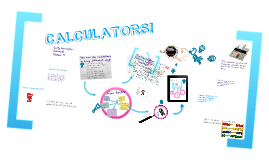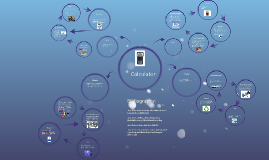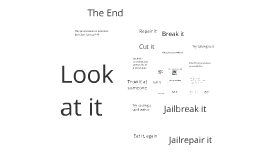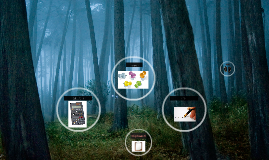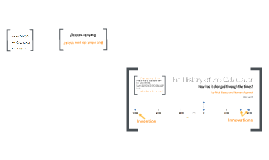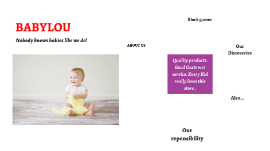Calculator
Transcript: 1623 Unfortunately, calculators haven't really changed in the last 20 years (other than ergonomics, better components, etc. but nothing major) and they probably won't change that much anymore. Most people just use a normal computer for calculations - a dedicated "calculator device" is no longer a necessity. The abacist uses the beads to count - add beads when adding numbers, subtract beads when subtracting numbers. Ancient Times 1961 The Abacus is still in use today. (that's it) 1948 *this timeline not drawn to scale It functions the same way as today's calculators - type in numbers, pick from four functions, type in numbers, then view results. Calculators are still in use by schools for testing. The Curta The world's first calculating clock was actually created in 1960 - more than 300 years after the idea. How has it changed through the times? It could only perform the four basic arithmetic functions, but it was the fastest calculator to date. The Curta utilized a stepped drum - as the drum rotates, it only trips the gear sometimes 1972 Sharp QT-8B by Nick Oyasu and Naman Agarwal The QT-8B's six C-sized nickel cadmium batteries were charged by an external wall adapter. The History of the Calculator Thanks for watching! The slide rule, while still used, has not been as popular ever since 1974, when the digital calculator became more effective. After the PC-1211, computing power continued to decrease in size and increase in power. Its cost in 1971 was about $495, equivalent to $2,855.06 in today's money. The calculator has been an important part of society - ever since society has existed. It was considered the cheapest electronic calculator at the time - it was sold for about $1100. Innovations The Calculating Clock The HP-35 was the first handheld scientific calculator. by Nick Oyasu and Naman Agarwal For other types of calculations, some slide rules come with a vast array of other scales - making it useful for just about anything! 1620 It can add and subtract six digit numbers, as well as multiply and divide - it was also the most accurate calculator at the time. The world's first electronic desktop calculator, the Anita was the predecessor to the modern calculator. Curt Herzstark drew up plans while in a Nazi concentration camp, Buchenwald. It was made primarily of stainless steel. 1980 But what about the future? It's been improved upon in order to make it easier, more powerful, and overall a more useful tool for humans. The (Actual) History of the Calculator Its origin is unclear - civilizations as early as Sumer had working versions of the abacus, but all were made of different materials and were differently styled. Anita Mk. 8 Concluding Notes The Abacus Sharp PC-1211 Sharp developed the first battery powered handheld calculator. It's basically the same as the Sharp QT-8D, however, it uses a rechargeable battery pack - a major innovation. Skillful abacists can be almost as fast as calculators. This led to calculators becoming virtually obsolete - computers can perform any function a calculator can, at the same size as well. (Period 7) Hewlett Packard HP-35 The PC-1211 technically isn't a calculator - it's a pocket computer. In today's money, it would've cost $8,593.83. Users line up the numbers they wish to multiply or divide on the natural scales and the answer is shown on the logarithmic scale. How has it changed through the times? The slide rule is comprised of three scales which slide - two linear scales and one logarithmic scale. The Slide Rule "BUT WAIT! What will calculators become? The Sharp QT-8D was introduced in 1969. Calculators aren't obsolete! I use them in school!" William Schickard invented his calculating machine in 1623, but the only model he made had been destroyed in a fire. "A New Inspiration To Arithmetic" was designed by the Bell Punch Company in Britain. 1970 It was developed by William Oughtred in 1620 by incribing logarithms on wood and ivory. It was the first calculator that made the slide rule - invented in 1620 - obsolete. It was extremely popular with sports car rally contestants for its accuracy and portability when calculating checkpoints and other racing-related calculations. The HP-35 marked the beginning of rapid development of electronic calculators and reduction in price. But what do you think? Invention People use the slides to display their numbers and then use the crank to perform their math. Also known as a counting frame, the abacus helps traders perform simple mathematical operations. The Curta was the world's best portable calculator for about 30 years. Modern engineers have been able to construct a working version of the clock, however. It could perform trancendental functions such as trigonometric, logarithmic, and exponential functions.






